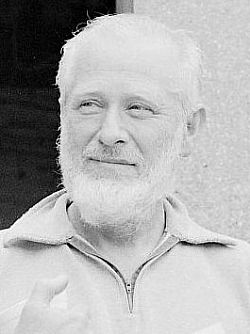Obituary: Professor Neville Symonds
Neville Symonds, who was the founding Professor of Microbial Genetics in the School of Biological Sciences (as it then was) from 1965 to 1989, died on 17 March at the age of 89.
 He will be sadly missed by colleagues and by the many students who were enthralled by his lectures and tutorials in which he placed people and their personalities into the discoveries that shaped the molecular biology revolution of the second half of the 20th century. Many of those students have gone on to become major figures in the world of modern biology.
He will be sadly missed by colleagues and by the many students who were enthralled by his lectures and tutorials in which he placed people and their personalities into the discoveries that shaped the molecular biology revolution of the second half of the 20th century. Many of those students have gone on to become major figures in the world of modern biology.
Neville trained in physics and mathematics in Australia, before moving to London University to pursue a PhD in theoretical physics.
He then moved to Dublin to undertake research on quantum physics with Nobel Laureate Erwin Schrödinger, who had become fascinated by the possibility that life processes could be described by physical laws, as described in his classic book What is Life?
Neville decided to take up this challenge and, soon after moving to the USA, began to work on bacterial viruses, which were being used to reveal the molecular basis of life processes.
At this time, he worked alongside most of the world’s key players, making important contributions without ever being truly in the limelight; in many of the classic group photographs of the 1950s-60s, Neville is there in the back row, smiling, warm and wise.
My first impression of Neville, when I was appointed a lecturer at Sussex in 1971, was of a wise, prematurely aged man with the most sparkling eyes that I have encountered.
Neville was always warm and curious, and his interests in ideas and people were truly inspirational.
Neville was a member of EMBO (the European Molecular Biology Organisation) and, from 1971 to the late 1980s, he co-organized biennial EMBO workshops on genetic recombination, which were hugely influential in shaping ideas about mechanisms of genetic change.
During this period his research switched to focus on the process in which selfish ‘jumping genes’ move within and between genomes, an emerging field to which he made seminal contributions.
During our years together at Sussex, Neville became increasingly interested in sailing and drawing, pastimes that would consume much of his energy in later life. His sketches of scientists at seminars and meetings had the uncanny ability to reveal personality.
For a sabbatical in Rome in the mid 1980s, he sailed his boat there and back, using many friends and colleagues as crew and discussants, while sketching characters in distant ports.
In 1987 Neville had an exhibition of sketches alongside Cressida and Quentin Bell at the Gardner Arts Centre on campus and at the time of his death his latest exhibition at the Hop Gallery in Lewes had just been unveiled.
Professor David Sherratt FRS, University of Oxford
